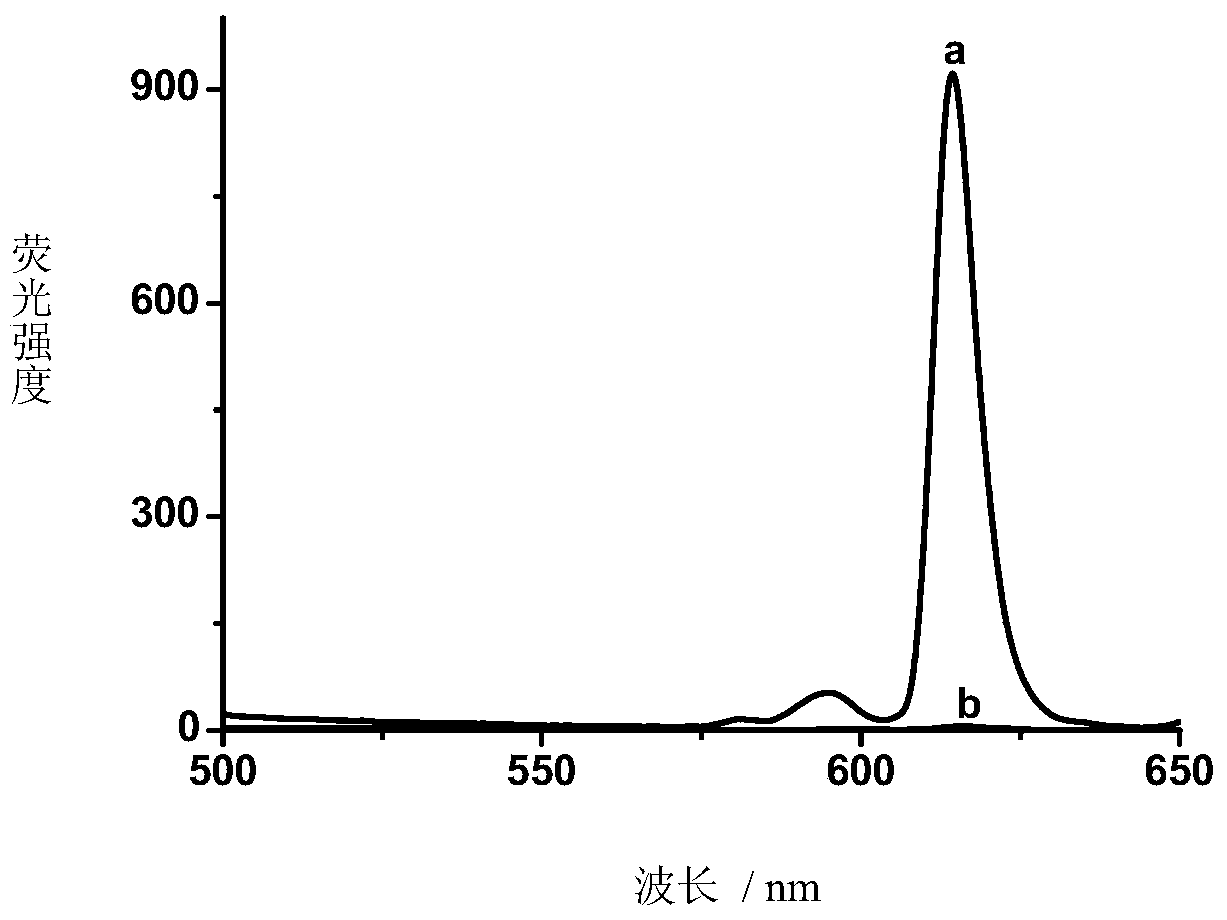A bifunctional nanoprobe based on lanthanide metals and its preparation method and application
A lanthanide metal and nanoprobe technology, applied in the field of analytical chemistry, can solve the problem of the single signal response performance of the probe, the inability to realize real-time, in-situ, and visualized analysis of biomolecules, and the inability to simultaneously realize on-site dynamic visualization and high-efficiency biomolecules. Sensitive quantitative analysis and other issues, to avoid the appearance of false positive signals, achieve quantitative detection, and good response performance
- Summary
- Abstract
- Description
- Claims
- Application Information
AI Technical Summary
Problems solved by technology
Method used
Image
Examples
Embodiment 1
[0063] The experimental procedure for preparing nanoprobes by using Eu-BCTOT-labeled peptides to modify gold nanoparticles is as follows: figure 1 shown.
[0064] 1) Optimization of Eu and BCTOT chelation conditions: a certain amount of EuCl 3 After being dissolved in deionized water, it was added to the BCTOT solution, and after incubation at 50°C for a period of time, the ultraviolet and fluorescence spectra of the system were measured. Through spectral analysis of the solution obtained after Eu and BCTOT chelation, the maximum excitation and emission wavelengths of Eu-BCTOT chelate are 350nm and 614nm respectively, which is the characteristic emission spectrum of Eu, indicating that Eu and BCTOT are successfully chelated. And BCTOT can indeed play a very good sensitization effect on the luminescence of Eu.
[0065] Then, the optimal chelation ratio of Eu to BCTOT was investigated, and the results showed that when the molar ratio of Eu to BCTOT was in the range of 0.1-10:1...
Embodiment 2
[0077] Example 2. Using the nanoprobe prepared in Example 1 to detect exogenous caspase-3 by spectrum and mass spectrometry.
[0078] 1) Different concentrations of exogenous caspase-3 and 10 μM probe were incubated in PBS (pH 7.4) buffer at 37° C. for 2 h. After the reaction, the solution was centrifuged at 120,000 rpm for 10 min, and the supernatant was collected for fluorescence detection. The excitation and emission wavelengths detected were 350 nm and 614 nm, respectively. The result is as Figure 4 shown.
[0079] Depend on Figure 4It can be seen that as the concentration of caspase-3 increases from 5ng / mL to 70ng / mL, the fluorescence intensity in the reaction system also increases. It shows that the probe of the present invention can be used for the detection of caspase-3; at the same time, it shows that based on the principle of FRET, an open nanoprobe is successfully constructed for the detection of caspase-3.
[0080] At the same time, in order to verify that t...
PUM
| Property | Measurement | Unit |
|---|---|---|
| particle diameter | aaaaa | aaaaa |
Abstract
Description
Claims
Application Information
 Login to View More
Login to View More - R&D
- Intellectual Property
- Life Sciences
- Materials
- Tech Scout
- Unparalleled Data Quality
- Higher Quality Content
- 60% Fewer Hallucinations
Browse by: Latest US Patents, China's latest patents, Technical Efficacy Thesaurus, Application Domain, Technology Topic, Popular Technical Reports.
© 2025 PatSnap. All rights reserved.Legal|Privacy policy|Modern Slavery Act Transparency Statement|Sitemap|About US| Contact US: help@patsnap.com



